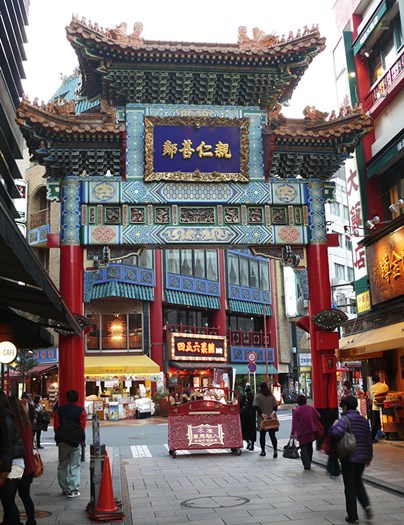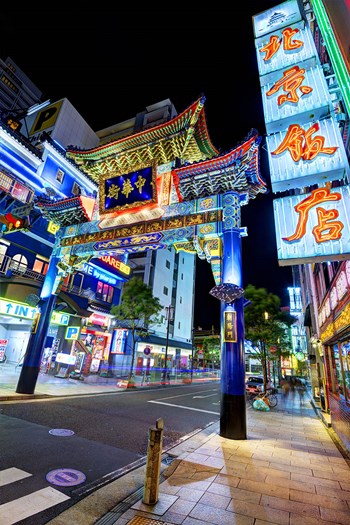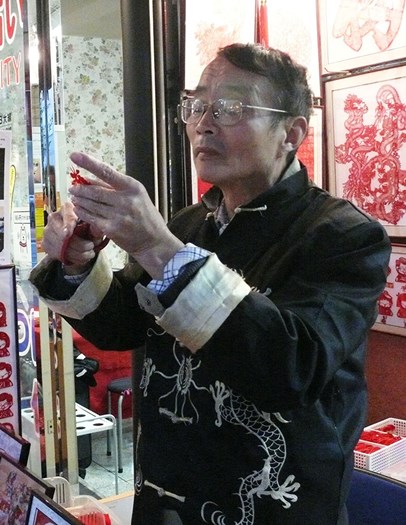YOKOHAMA, JAPAN - It’s almost deserted in Yamashita-cho, the main street in Chukagai (this city’s Chinatown and biggest tourist attraction) where I’ve come to satisfy my dim sum craving.
Hawkers standing outside the restaurants and souvenir shops are playfully aggressive when I stop to admire some window displays. A young man approaches and asks in English if I’d like to sample some freshly roasted chestnuts.
I ask him, where are all the tourists?
“Chinese no come,” the young Japanese vendor responds. “They no like us. They take our island.”
Chinese are normally the largest group of tourists who visit Chukagai, a place where the mainlanders fill up on dishes more familiar to their palettes. However, at the time of my visit in early 2013, Chinese tourism to Japan had all but dried up thanks to a territorial dispute between the two countries over some uninhabited islands in the South China Sea, which both countries claim.
Chukagai just doesn’t seem right without lots of people milling about. But I soldier on, noticing this is the cleanest Chinatown I’ve ever encountered.
Tenchomon Gate is where most people begin their tour of this sprawling area, which occupies more than 300 square metres of Yokohama. But there are actually three other colourful entrance gates and five smaller ones scattered about Chinatown.
Tenchomon is the most photographed mainly because of it’s next to the Motomachi-Chukagai subway station (Minatomirai line), where I arrive.
As I explore the streets, all I hear is people speaking Japanese — few Chinese actually live in this section of town anymore, which was originally settled in 1859 when Yokohama became a port city and began welcoming traders from around the world.
The narrow streets leading off Yamashita-cho are named after the Chinese cities from where the earliest immigrants came.
Hong Kong Road and Shanghai Road remind us that the first wave of Chinese arrived after a ferry service was established between Yokohama and the aforementioned Chinese cities in the 19th century.
The Chinese population was later bolstered when Cantonese from Guangzhou began arriving about 100 years ago.
A festive mood hangs over Chinatown most nights because Chukagai is also the city’s main entertainment district; newer areas like Pacifico Yokohama in the revitalized docklands with its high-end shopping arcade and theme park have done little to dampen the enthusiasm for this part of town. But this Chinatown has not always seen good times. A plaque I find on a side street reminds me that this district suffered thousands of casualties during the Great Kanto Earthquake of 1923. Much of Chukagai was destroyed in that quake and many Chinese decided to return to their homeland rather than rebuild.
Chinatown’s growth here was further stunted thanks to the events of World War II and it wasn’t until 1955 that Yokohama even recognized the area as “Chinatown.”
I’ve been told that in Japan it’s considered impolite to eat while walking, but that rule apparently doesn’t apply in Yokohama’s Chinatown.



Above: Yokohama's Chinatown is one of the most colourful in the world and it's filled with colourful characters.
Japanese school girls gathered on street corners gobble down sheng jian bao, a square dumpling filled with meat and broth whose underside is browned on a skillet before being served. The girls break into laughter when the broth unexpectedly explodes out of a dumpling and onto the white shirt of one of their mates after she takes a bite.
Other students are lined up waiting to buy different varieties of the dumplings that have made this area affordable for diners.
Lots of stores are selling nikuman — steamed buns — that come stuffed with barbecued pork, shrimp, sesame and even shark fin.
I ask one of the students what restaurant serves the best dim sum?
Without hesitation, the student troupe answers as one: “Edosei!”
The small eatery on the corner of Kanteibyo Dori and Hong Kong Street has been in business since 1894 and Edosei’s dim sum is some of the best I’ve ever tasted. Another area favourite is a simple restaurant called Seihuro, where they have served a variety of dumpling called shumai since 1945. A message scribbled on the wall of the quaint restaurant notifies diners that this is the place where famed Japanese novelist Shotaro Ikenami liked to eat.
At Dalian restaurant back on Yamashita-cho, I purchase a takeout order of pot stickers that should find their way into the Food Hall of Fame. There’s a lineup at the entrance to Santon restaurant — its boiled dumplings are mouth-watering so the wait is always long, apparently.
There are many other attractions to see in this sprawling Chinatown, like the ornate Masobyo shrine, the eight-storey Daska entertainment building, the Fun Aquarium, the Chinese Christian Church and lots of shops.
But the main reason so many people never get their fill of Chukagai is because of the outstanding restaurants gathered here.
All that’s missing in this Chinatown is the Chinese.
About the Author
Marc Atchison is a veteran journalist and a seasoned traveller with more than 20 years of travel writing experience. As the former Travel Editor of the Toronto Star, Canada's largest newspaper, and now Editor-in-Chief and Senior Writer for TraveLife magazine (Canada) and travelife.ca, Marc has been to over 100 countries in the world. Japan is one of his favorite destinations and he's been there on numerous occasions.